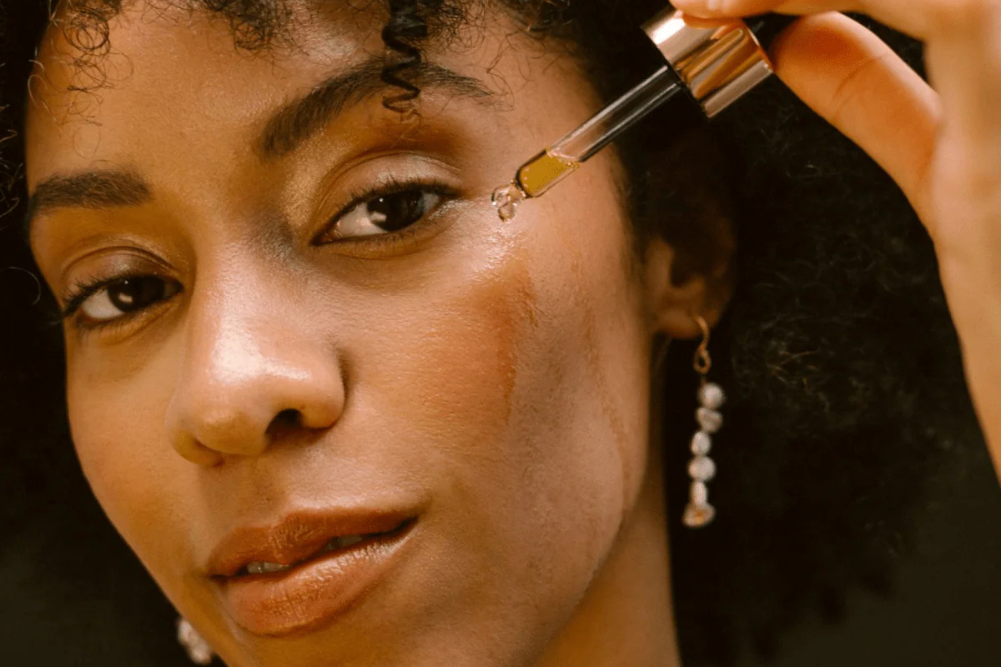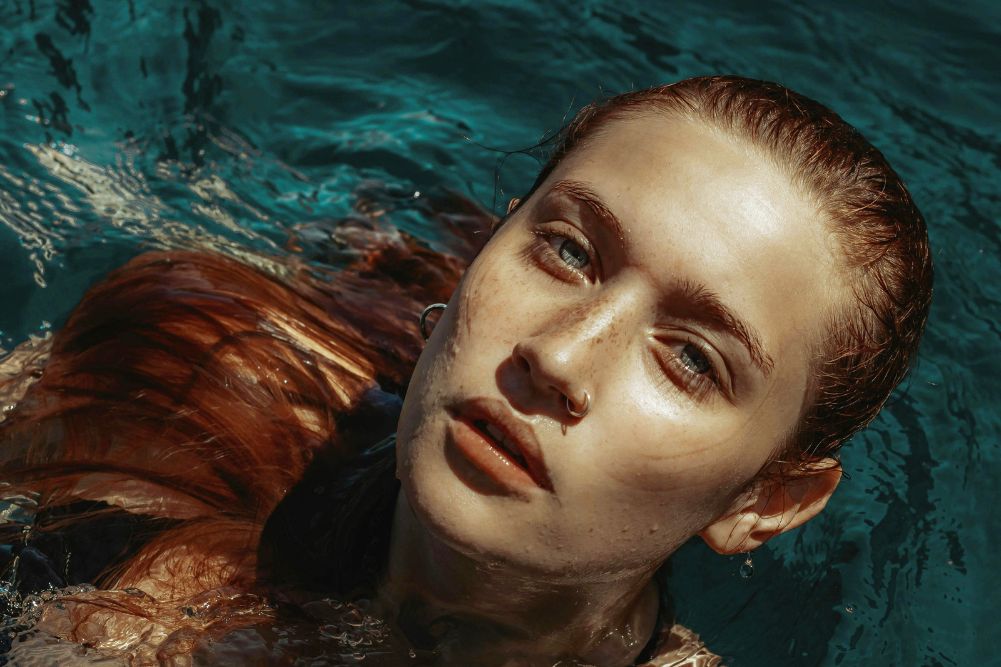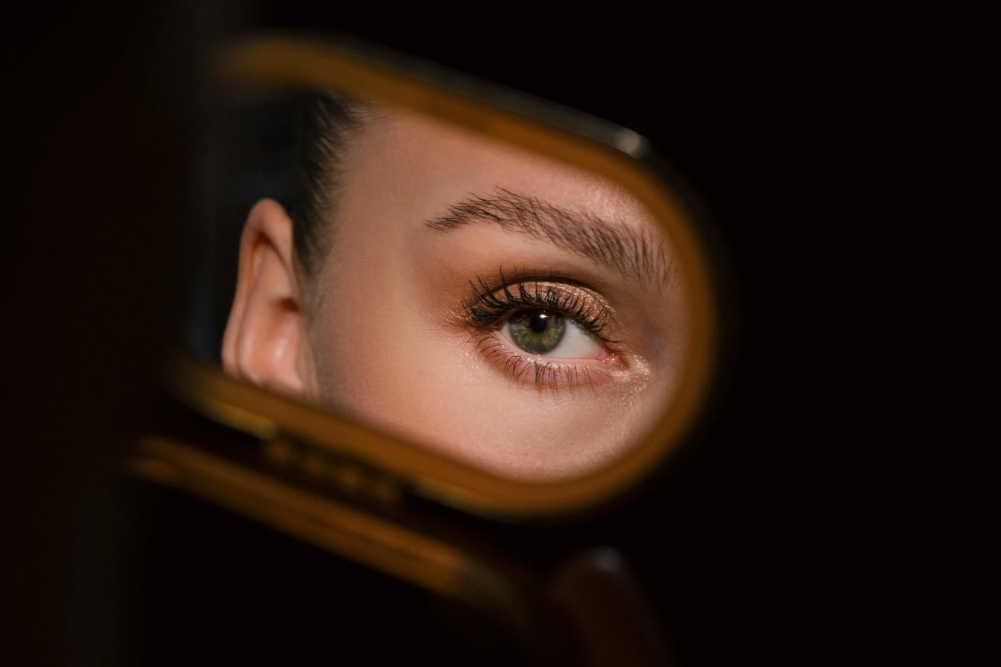The truth about beauty
Devoid of makeup, with natural hair and the body of a woman half her age, 51-year-old Chilean-born yogini Satya Katiza Ivulic radiates the quality of beauty that many women aspire to. A yoga teacher trainer of international standing, most recently on-staff at Bali’s exclusive Como Shambala Estate, Satya has a contagious enthusiasm, femininity and warmth that inspires her many students.
“What I see when a woman has beauty is that she shines from the inside through her eyes and skin,” Satya explains. “It’s the way she uses her words and moves her body. It’s an inner connection and that’s beautiful. That is a very profound place in herself where she moves from. It’s like having a crown on your head, full of light.”
For Satya, beauty doesn’t have any proportions or special look. She says, “It’s very beautiful when a woman knows how to use clothes, fabric and jewellery with sensitivity. It’s the state of being in communion with everything a woman does — with harmony, grace and connection.” When a woman is truly radiant, the quality of beauty is unmistakable. Luminous and expansive, she is magnetic, lovely and sexually attractive.
Yet in the pursuit of being beautiful, the over-identification with the physical form has moved us away from the inner qualities that create the glow of beauty in the first place. In order to reconnect with the essence of beauty, it’s helpful to investigate points of disconnection.
Umberto Eco opens On Beauty, a historical survey of the Western idea of beauty, with a declaration that “‘Beautiful’ — together with ‘graceful’ and ‘pretty’, or ‘sublime’, ‘marvellous’, ‘superb’ and similar expressions — is an adjective we often employ to indicate something that we like.” In many Western and non-Western societies women have been deemed desirable or good according to their physical beauty, as defined by the dominant culture. To be beautiful, therefore, has become interlinked with what is good, what we like and what we would like to have for ourselves.
Appearance thus conforms to sets of ever-changing socio-cultural ideals, which are arbitrary and, in the contemporary world, largely driven by market forces. In a world that overvalues physical attributes, a woman’s beauty can dramatically impact on her marriage and partnership prospects. The more she fits into what is deemed attractive and sexually potent, the more desirable she is with greater prospects for her to secure a high-status partner.
Her beauty thus becomes her currency (which is why so many women want it), enabling her greater ease of access to wealth, status and power — both her own and her partner’s. Generally speaking, her prospects of employment and social popularity tend to increase the more attractive she is.
This also works in reverse with women who are outside “beauty norms”. In 2006, a New York study found that obesity was associated with a 16 per cent reduction in women’s probability of marriage, an 18 per cent reduction in women’s wages and a 25 per cent reduction in women’s family incomes. High-fashion models, who are selected entirely for their appearance, actors and celebrities feed the media and set the tone of the look for women across the globe.
Swedish former international model, 26-year-old Lisa, travelled across the globe between the ages of 16 and 22 and worked in front of the camera. She typifies the modelling world’s checklist: blonde, willowy with a balletic gait, her long eyelashes framing pools of blue and contrasting with perfect milky skin. Lisa’s professional and personal values, however, are not-so-typical. They reveal a woman with a rich inner life and strong self-worth. No longer working as a model, Lisa is more interested in a deeper level of beauty — both her own and those around her.
“True beauty is reflected in a women’s whole being and I believe that beauty is created from within,” she says. “The women who are beautiful have strength and confidence in who they are. They are passionate, intelligent, confident and also loving, kind and considerate. Love and the belief in yourself and others as well as the ability to be happy and positive create this beauty — these traits are reflected on the outside.”
Ambivalent about the benefits of modelling, she notes that the aesthetic criteria of models’ ethnicity and cultural background and the masculinisation of women is also trend-based and changes frequently. “These are very superficial traits. It’s got nothing to do with personality, background or who you are,” she says. “You don’t have much say about how you are perceived. You are the image that’s selling and they [the fashion world and media] do what they want with it; they create the standard. The standard for models is that they need big eyes and lips, defined bone structure, flawless skin and height that starts at 177cm,” she explains. “If a woman is taller, she is more fascinating.
“Models need to be very slim and slightly androgynous, which is why very young girls are used because they haven’t yet developed the full female body shape. The clothes are only made in the sample size, which is a small European 34 [Australian size 4–6]. The models need to fit these.”
Lisa’s revelations of other people’s negative reactions to her physical beauty when growing up are poignant. This experience is unspoken yet common for many young women. Jealousy, taunting, social exclusion and gossiping in young women reveal disturbing distortions in perception, which derive from ambivalent relationships to social ideals of what women “should” look like and the enormous gap between that and how they actually appear.
Not only does this indicate projection of their own insecurities and discomfort with another woman’s beauty but it also highlights a lack of self-acceptance and not feeling innately beautiful in oneself. In 2005, a study in 10 countries commissioned by Dove surveyed 3300 girls and women between the ages of 15 and 64. The resulting publication, Beyond Stereotypes, found that 90 per cent of these women wanted to change at least one aspect of their physical appearance, with bodyweight ranking the highest.
Clarissa Pinkola-Estes, author of Women Who Run with the Wolves, succinctly identifies the root cause of distortions of beauty and what this does to women’s psyches: “When women are relegated to moods, mannerisms and contours that conform to a single ideal of beauty and behaviour, they are captured in both body and soul and are no longer free.”
Single culturally ascribed ideals of beauty and behaviour, particularly those around youthfulness and thin bodies, breed distortions that manifest in eating disorders, excessive use of cosmetic surgery, anxiety, depression and more. So many women struggle, to their detriment, to fit unattainable notions of size, weight and shape to conform to this ideal. The Beyond Stereotypes study also found that 67 per cent of all women aged 15 to 64 withdraw from life-engaging activities due to feeling badly about their looks.
While some women withdraw, others simply change their looks. With an annual turnover in the vicinity of $1 billion, cosmetic surgery in Australia is big business. In 2009, Australia was ranked in the top 25 countries in the International Survey on Aesthetic/Cosmetic Procedures performed.
The pursuit of the androgenised whippet-thin body has led to an epidemic of young women (and some young men) dieting and starving themselves. After obesity and asthma, anorexia nervosa is the third most common chronic illness for adolescent girls in Australia. Of the 14,686 women aged 18–23 years surveyed in The Australian Longitudinal Study of Women’s Health, two-thirds of them had a BMI within a healthy weight range but only one-fifth of these women were happy with their weight.
While distortions such as the above are well documented, there are many people and organisations actively engaged in revealing these debilitating conditions and encouraging women and men to discover what true beauty actually is. Three-time Grammy-nominee singer-songwriter Toni Childs is one of them. She was commissioned by Eve Ensler, writer of The Vagina Monologues, to write a song that would end the violence against women and children. Childs’ evocative song Because You’re Beautiful went on to win an Emmy for Outstanding Music and Lyrics. After that, the Because You’re Beautiful project was born (www.causeyourebeautiful.com).
Beauty, for Toni Childs, is power and she says, “Waking to our beauty is a powerful expression. Not settling for less than that is a powerful contribution; it’s the resonance factor. The ripple effect on the world is massive because we are all connected globally. When each one of us does it, it gives permission to everyone around us to do it. And this is the next level of human evolution.”
The singer has made self-acceptance and the re-alignment in self-perception around beauty a large part of her life’s creative output. Toni Childs is on a big mission for the women — and men — of the world to see themselves as a living beauty. The crie de coeur came from Childs’ own inability to accept herself and her own beauty. “I think it’s a struggle that I have to own. It’s caused me to go down into a rabbit hole to try to find the roots of this distortion.”
The key for her to reconnect with beauty — initially her own and then everyone else’s — is to experience her own vulnerability, to visit the places where she doesn’t believe she is beautiful. “What happens is, we grow up in a culture, in a world that says, ‘You don’t look like this — you’re not beautiful’ and you believe that. You’ve just given your power away,” she says. “So if you are giving away your power, you can’t shine in the beauty and glory of who you are.”
She explains that in the first instance, “Some ancestral prisons need identification and dismantling to identify the blocks to experiencing beauty. These can be very difficult to let go of and disconnect from.” After acknowledging the distortions, their impact and where they come from, what are some of the steps a woman can take to move beyond and be truly beautiful, whatever her age?
For Satya, the first step for any woman is to develop an intimacy with herself. She explains, “She has to create a place in her daily life to meet herself. This is done by breathing deeply, engaging all the senses — feeling her body and skin, smelling, hearing, seeing and listening — and then moving into meditation. A woman needs to take time to do this and acknowledge the physical body as a temple, the most sacred place she has ever visited,” she says.
When a woman moves from each portal of the senses, she will come to a place called “essence”, which Satya also defines as consciousness. “It’s like moving from nature to more depth and this depth of nature is called essence. And that deep essence is all to do with presence and that’s beauty. That’s beauty.”
Many women juggle multiple commitments of family, career and more. Rather than add one more thing on the to-do list for them, the yoga teacher recommends, “First of all, you have nothing to change in your life. Everything you are doing, just allow it. Start the day with 10–15 minutes lying in bed breathing and make this time the most sacred moment of your day.” Instead of jumping out of the bed, Satya advises that women put their hands on their diaphragm, breathe for about five minutes and then move to the feet, giving attention to each part of the body before getting out of bed. “This will be the beginning of connecting with yourself and moving towards your beauty,” she says.
Afterwards, when women shower, Satya encourages them take time to feel the water touching the skin and then feel any lotions or creams that are put on the body. “Feel your eyes,” Satya recommends. “Feel every part of your being before you go into the outer world. Just bring awareness. You don’t have to do anything big. When you prepare your breakfast, take the time to taste your food. So you’re actually just doing the same thing as you normally do but now you are bringing awareness to it. And then, suddenly, without knowing it, the world starts to shine. It’s that simple.”
For young women whose energy is still fresh and vibrant, Satya encourages them to be as natural as possible and stay in contact with their rhythms. And for all women, she recommends being connected to their menstrual cycles and the moon, which supports women’s experience of their femininity and their innate sacredness, which ultimately gives women strength and trust. “Make sure the menstrual days are not filled up with going out, but filled up with moving in,” she says. “If you have to work, do it, but don’t put a lot of stuff in there. Afterwards, you will naturally start to come into a cycle of moving outwards and then you will feel more attractive and connected with your energy and femininity.
“The more women are able to fully embrace this cycle, we are also able to see the male in his beauty. They have a cycle, too, but they don’t recognise it. The female needs to recognise nature very intimately because that allows us also to communicate with the male in a very natural way. And that makes a woman beautiful.”
Satya’s advice is simple and she says, “In a very intimate way, start to love yourself. Start to appreciate the incredible place of being a woman.” She teaches her students to love themselves, recognise themselves and stop trying to change anything. She encourages them to embrace every part of their bodies as they are, embrace the sense organs, the bodily functions, the breath and to connect to their real natures.
“As a woman, you are the one who needs to recognise that it’s from this connection with yourself that beauty comes and then the man becomes attracted. Then you have something to tell,” she says. “You have something to show.”
True beauty is an inside job. It shines from the heart and radiates through the eyes. It expresses all the body’s aspects. “The most beautiful thing I know is seeing my loved ones laugh and be happy. It just makes them radiate,” says Lisa.
Beauty is empowerment, a state of being fully in the body rather than a cultural power of the body. The individual and collective journey back to the heart is what ignites radiance and makes beauty shine.
Trudy Johnston is a lifelong student of transformation, passionate writer, media whiz, story teller, tango dancer, yogini and chocolate addict. W: www.thebutterflytemple.com







